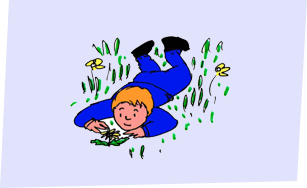Phonics
We teach phonics systematically, using the "Little Wandle Letters and Sounds" programme. Have a look at the sequence of phonic letters and sounds taught from Reception to Year One:
"Phonics and Early Reading Policy" can be accessed HERE.
All children, in all year groups, receive five phonic lessons per week, with some children receiving additional keep-up interventions.
We aim for Reception children to be blending by the end of December, and progress to phase 4 by the end of the year.
In Year One, we revisit and review previously learnt sounds, aiming for them to access phase 5 before they move to Year Two. Children in these year groups without secure phonic knowledge, receive daily keep up sessions.
In Year Two we revisit and review previously learnt sounds from phase 5, aiming for the children to have secure phonic knowledge, allowing them to move on to spelling patterns and rules in SPaG lessons. From the start of the spring term, children who are not yet secure in their phonics receive rapid catch up interventions, to ensure no child is left behind.
We want the children to understand that their learning in Phonics and reading sessions is integral to all other learning, and a key skill in our lives.
The Little Wandle website also has some great videos and information for parents to support children with the pronunciation of phonemes, formation of each letter sound as well as an understanding of how we teach phonics: Little Wandle Parents' Page

Definition of terms
The following explains the meaning of some of the terms used in the context of children learning to read.
Sequencing the ability to place images in an order which makes logical sense —telling a story without words.
Phonemes are the smallest units of sounds in words — what you can hear
Graphemes are the written symbol, the letter or group of letters which represent the sounds in spoken language.
Phonological awareness is an understanding that spoken words are made up of small units of sound and that these small units can be combined to form words (c/a/t). Children need to be able to hear and say these sounds in speech before they can attach them to written words.
Consonants are the following single phonemes: b, c, d, f, g, h, j, k, l, m, n, p, q, r, s, t, v, w, x, y, z
Vowels are the following single phonemes and are found in every word in English: a, e, i, o, u. Sometimes ‘y ’ is considered a vowel.
Blends/diagraphs are combinations of consonants to make a sound i.e. fl, bl, sl, cl, pl, bl, gr, tr, br, cr, dr, pr, fr, wh, str, sw, sp, sc, sn, sm, sk
Vowel diagraphs are grapheme combinations in which the two vowels together make a single sound i.e. ai, ae, ou, ei
Blending/ synthesising means being able to join together sounds to make a word. Children need to be able to do this orally before they can do it with graphemes (letters)
Segmenting a word means being able to separate out the sounds within the word.
Decoding is the mechanical process of just using sound/letters to tackle words. Words can be ‘read’ in this way without a child understanding what they mean.
Inference is being able to take information from the text which is not actually written but which can be worked out by thinking about a character’s behaviour or events in the story.
phonics websites

